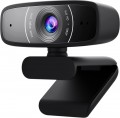Megapixels
The number of megapixels in the matrix that the camera is equipped with, in other words, the native resolution of the matrix. First of all, the maximum photo size directly depends on this indicator: for example, a 1600x1200 frame requires at least 1600 * 1200 = 1,920,000 pixels ≈ 2 MP. With video, the situation is somewhat different, where the actual resolution of the matrix can be noticeably higher than required for the frame.
There is an opinion that the more megapixels, the better the image is obtained. Formally, this is not the case: the resolution of the sensor only affects the detail, and in itself numerous megapixels can even worsen the picture — especially if the matrix is small. However, in fact, high-resolution sensors are often installed in fairly advanced cameras, in which high image quality is achieved through a number of characteristics.
File format
File formats in which the camera can save video footage.
This parameter is for reference only: modern computers are equipped with extensive sets of codecs that allow you to play almost all common formats, and in extreme cases, the missing codec can be installed separately. TVs in this regard have more limited capabilities, however, in webcams designed for them (see "Purpose"), this moment is initially taken into account.
Indicators
Types of indicators (usually light) provided in the design of the camera. In modern models, there are (separately or together) two types of indicators:
— Nutrition. An indicator that indicates that everything is in order with the power supply. On some models, this indicator only works when the camera is turned on and ready to use, on others it can also work in standby mode — for example, it will glow in a different light than when the camera is on.
— Activities. An indicator that indicates that the camera is shooting video — and, accordingly, it is being recorded or broadcast on the Internet. Such an indicator makes it easier to keep track of the shooting mode and avoids unpleasant situations, such as accidentally broadcasting to the Internet from a camera that you forgot to turn off.
Cable in box
Detachable cable design provides additional options for connecting a WEB-camera: the bundled cord can be changed to a longer or shorter one. Also
, the detachable cable is very convenient for storage and transportation.
The built-in cable is always in place - you can lose it only with the WEB-camera itself. On the other hand, a fixed wire cannot be quickly replaced with another one (for example, a longer one); and if it is damaged, you will have to carry the WEB-camera for repair or change it entirely.

